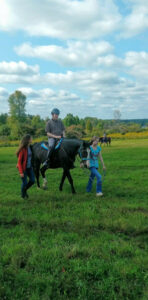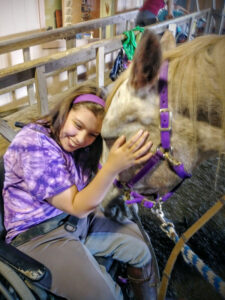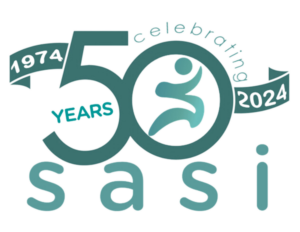The Benefits of Therapeutic Riding
Therapeutic horsemanship lessons can impact the rider in the following ways:
Sensory Awareness – A barn setting may be an entirely new environment for the individual. Just walking in, seeing the sights and smelling the hay, welcomes riders to the experience. Once our riders are on a horse, the motion of our horses round out the optimal sensory experience.
Physical Development – Understanding the implications of the diagnoses of each student is imperative as is the ability to develop lessons that maximize physical development. The motion of the horse at a walk moves the rider’s pelvis in almost the same manner as it moves during a “normal human walk”. This contributes to improved posture and gait. A mount should be selected to suit the rider’s physical needs. Some require a wide, “bouncy” gated horse while others may benefit from a narrow, smooth-strided mount. Strength, endurance and flexibility are increased through barn management and grooming as well as through riding.


Cognitive Development – Therapeutic riding provides an ideal setting for cognitive development. Directionality, sequencing, increased vocabulary, problem solving and increased attention span are just a few of the areas that can be addressed through the pleasurable pursuit of horsemanship.
Emotional Growth – Learning new skills and overcoming obstacles through a series of successes builds self-esteem. The horse is an excellent teacher of natural consequences as it responds to the rider’s cues without judgment. Above all, the horse offers unconditional affection and is a very large, accepting shoulder to cry on.
Social Development – Utilizing a “team” approach of riders, mounts, volunteers and instructor, the therapeutic riding lesson encourages bonds of friendship and mutual respect. An appropriate competitive spirit is fostered through lesson games and involvement in organized events like our Annual Horse Show and open competition. Win or lose, the “team” shares the struggles as well as the victories. Our team at the barn also helps improve the social interaction of riders, as they work together.
